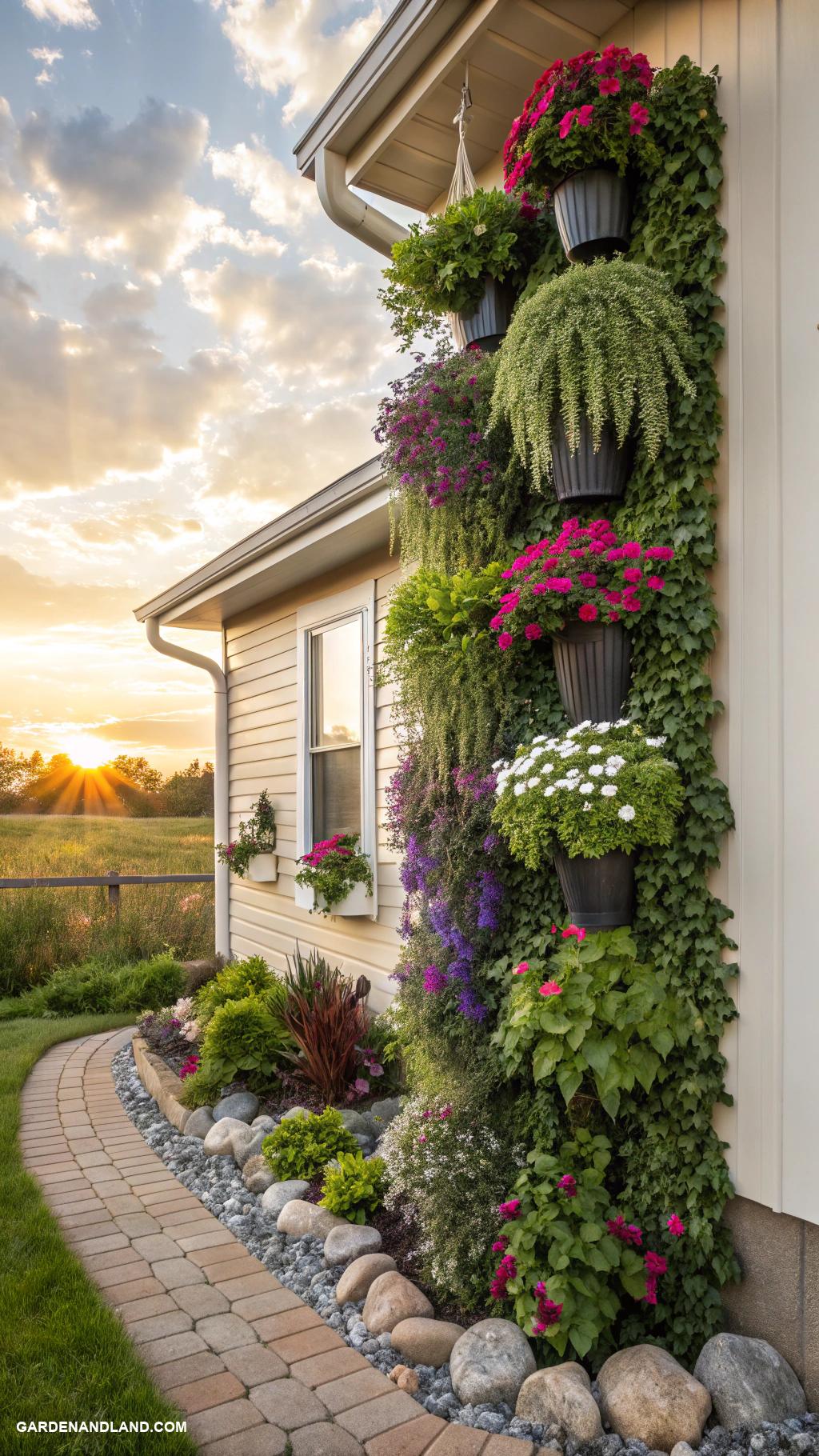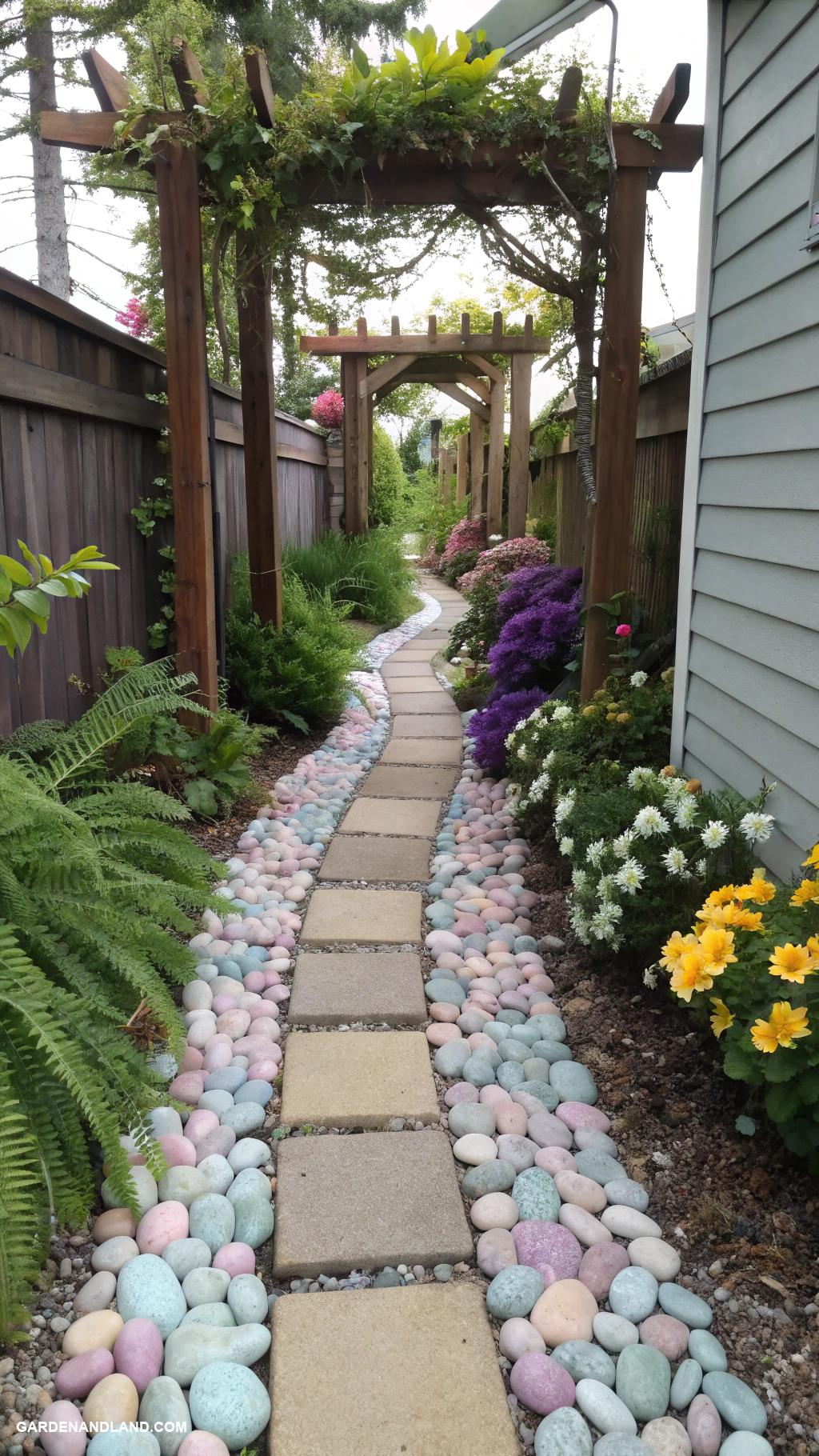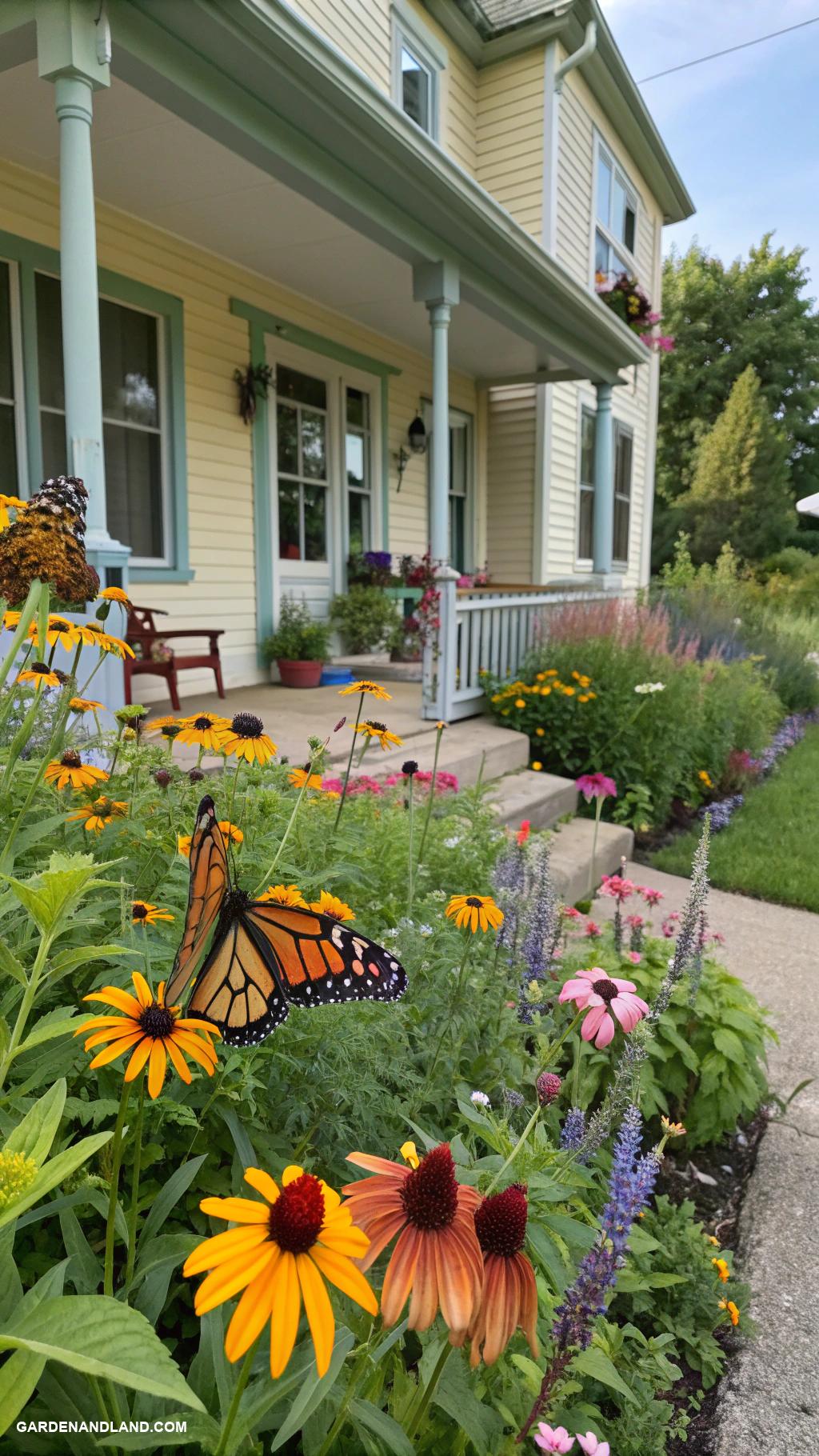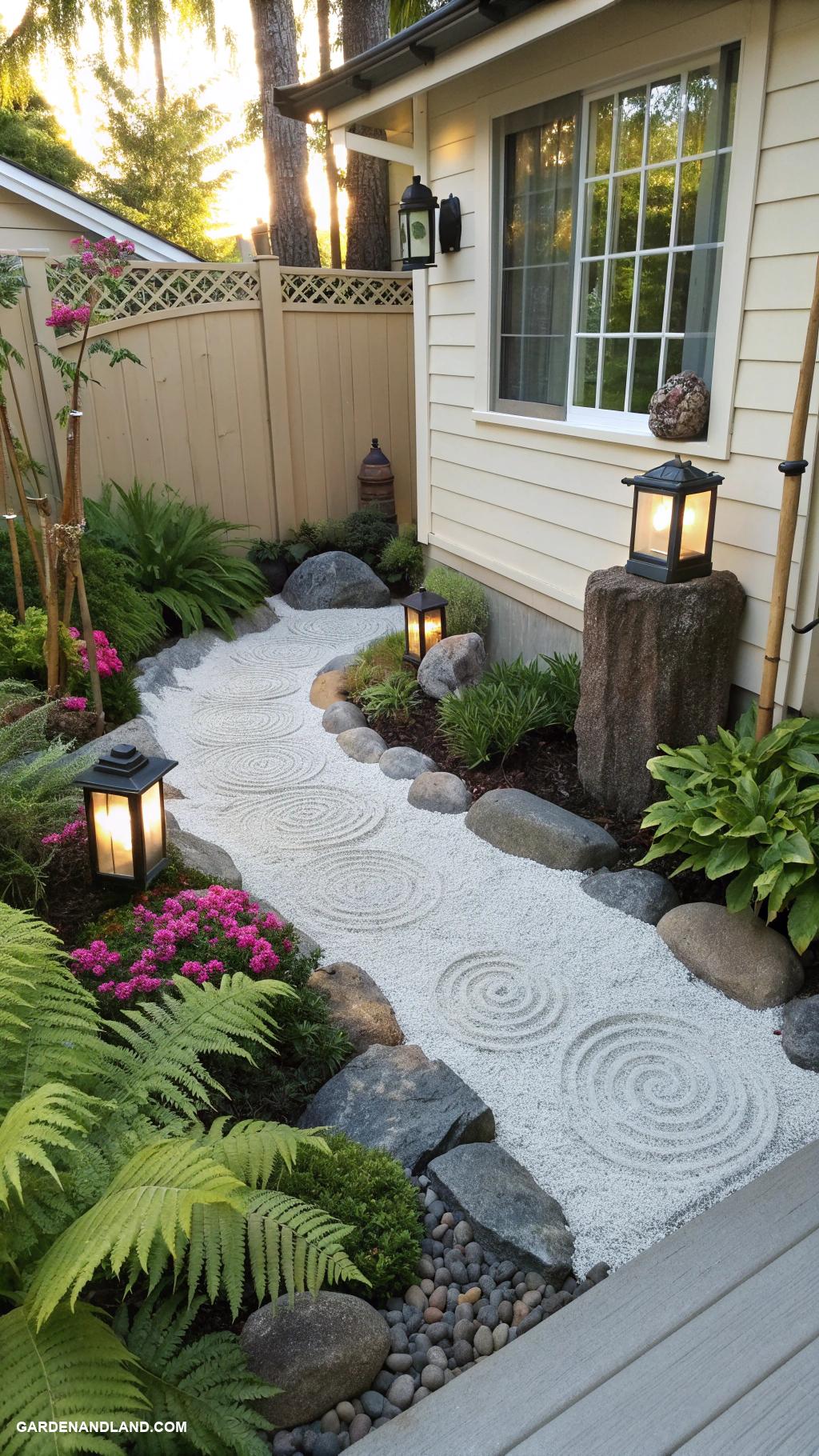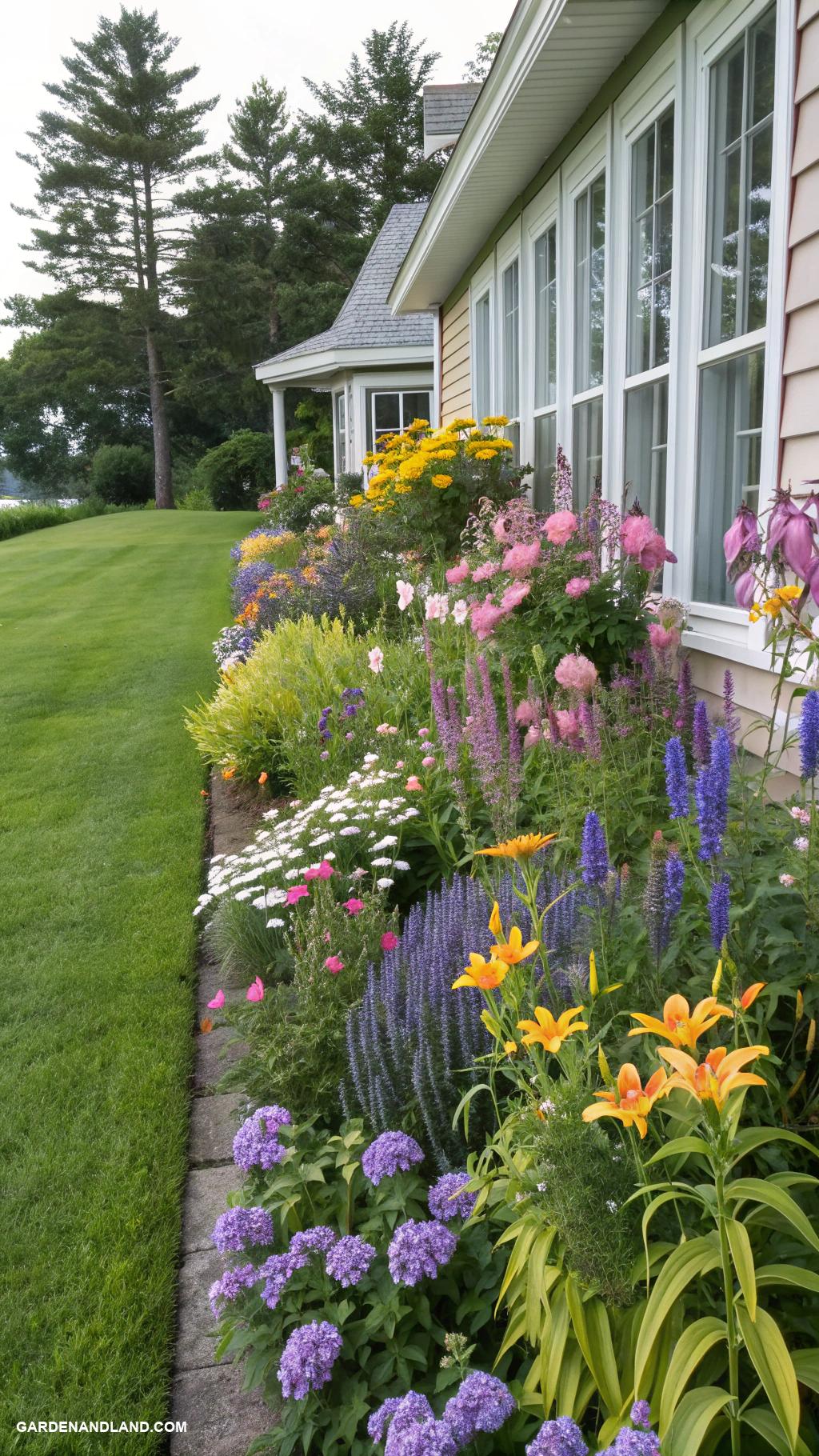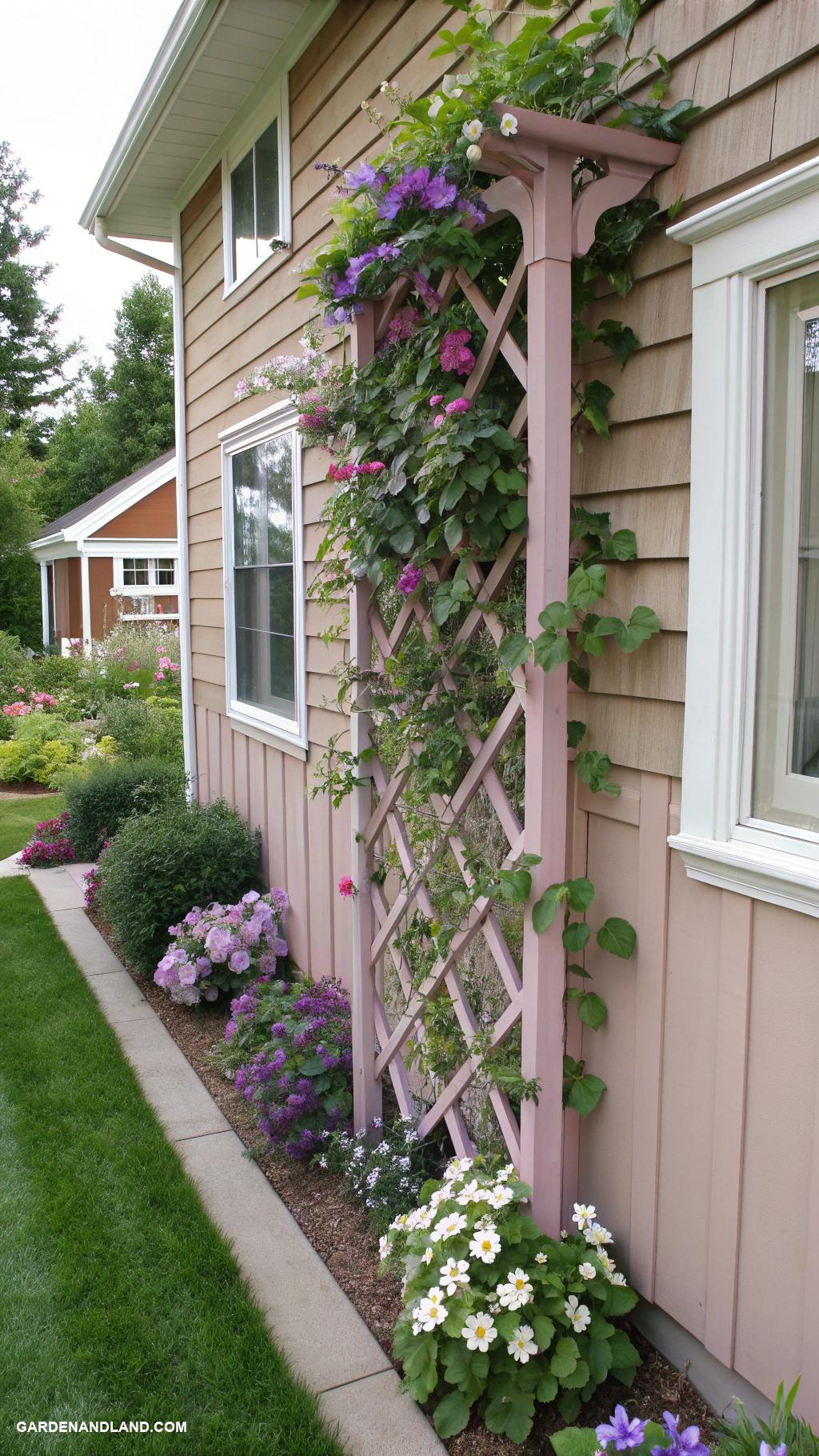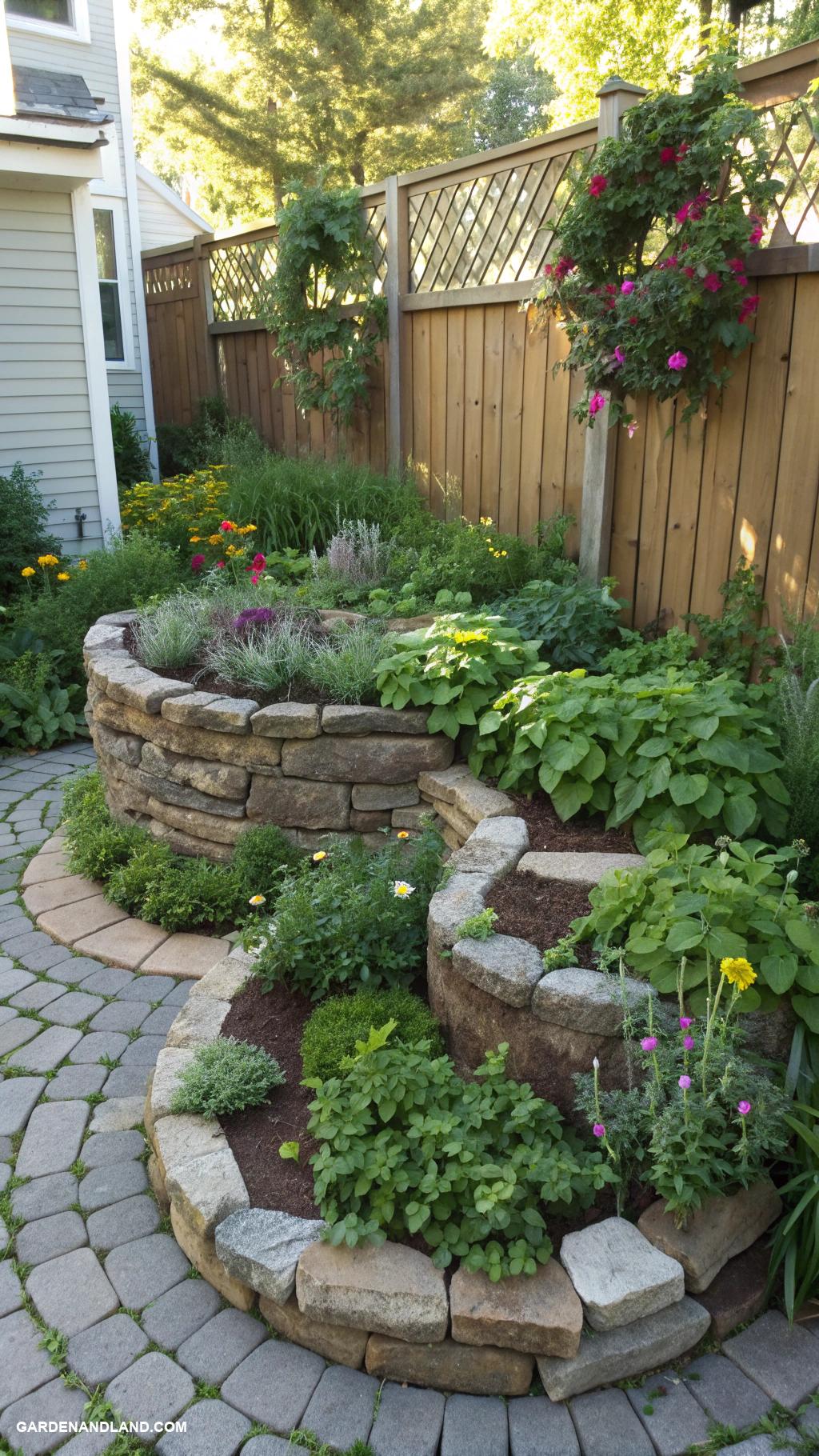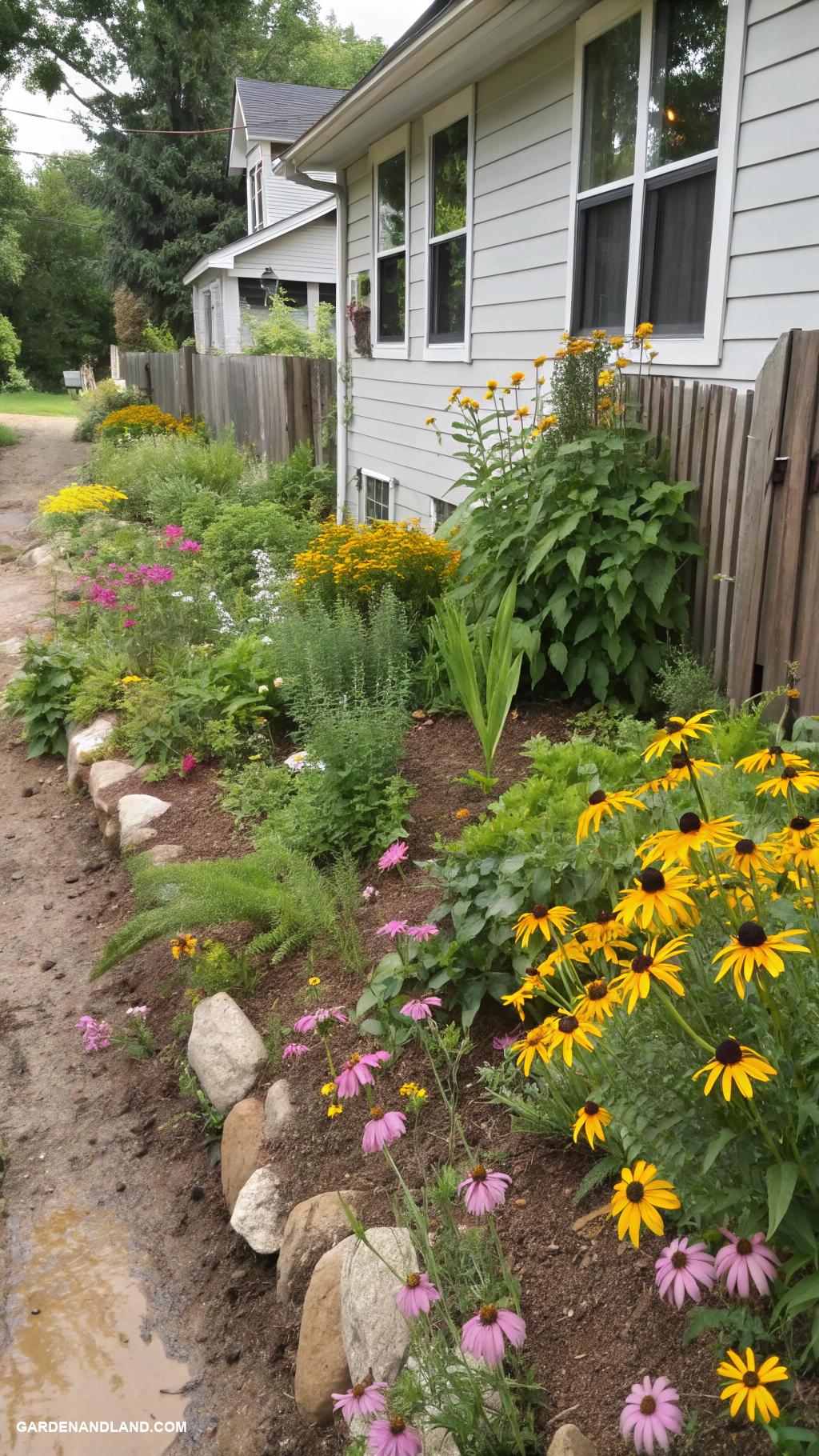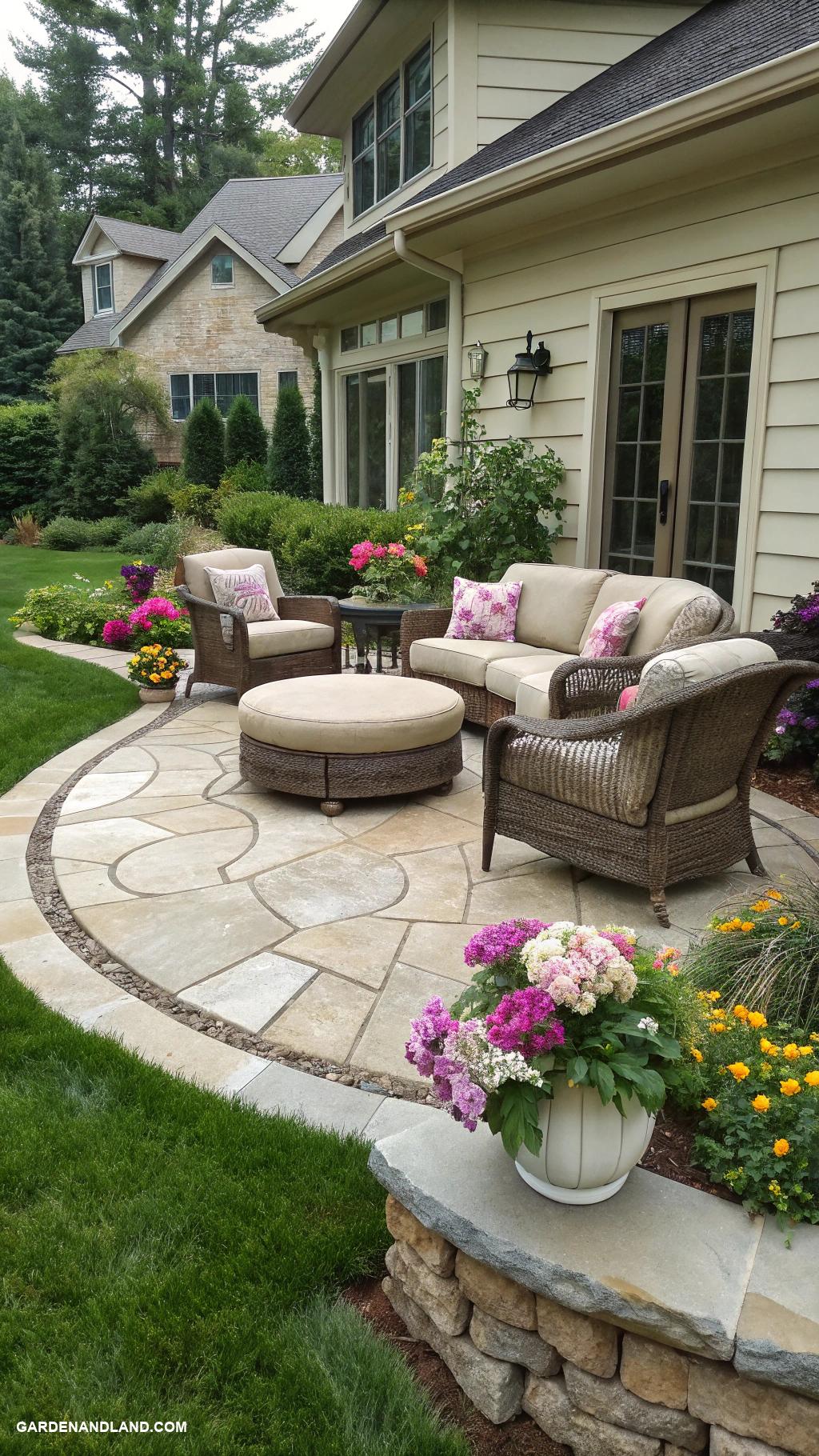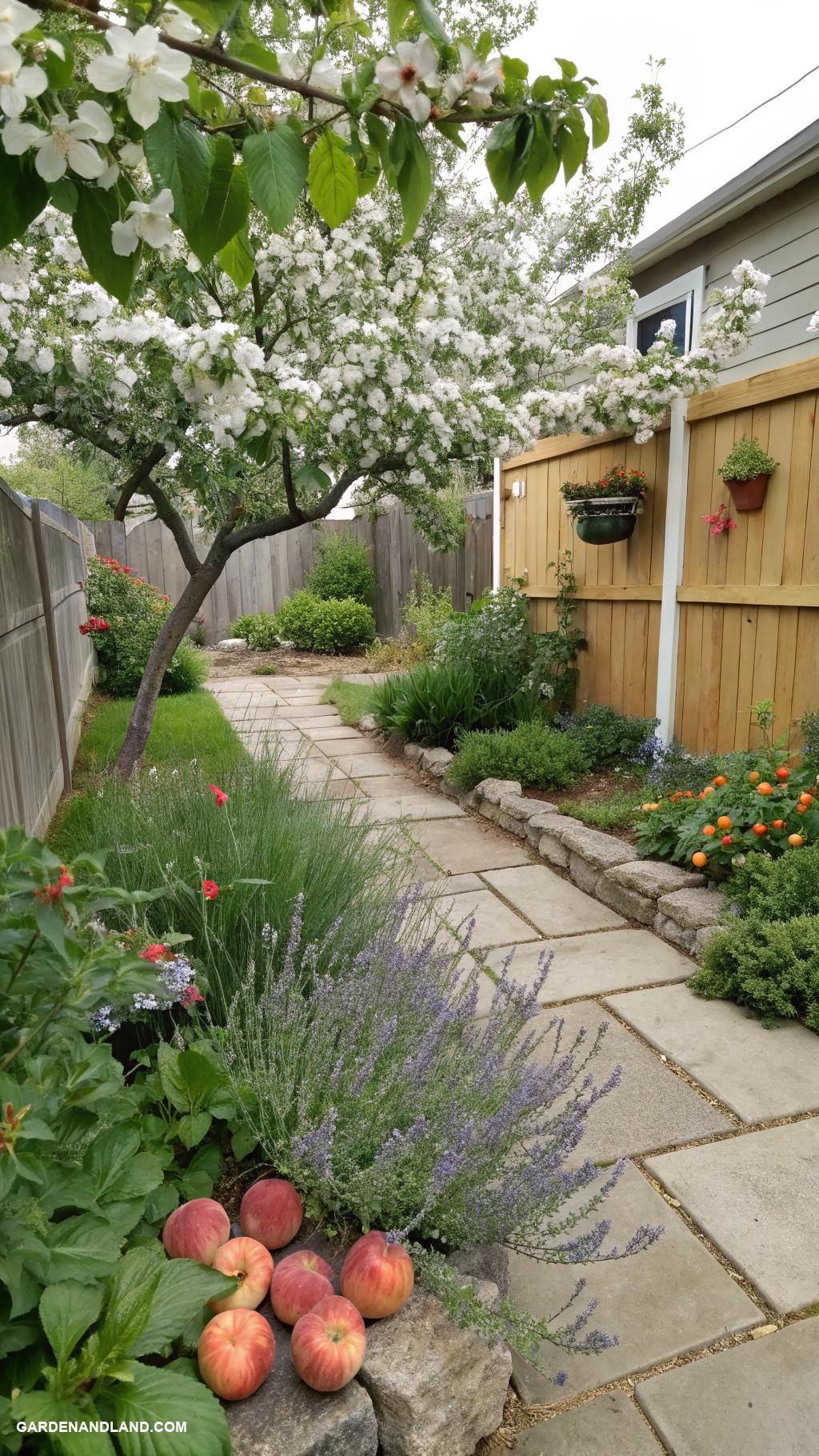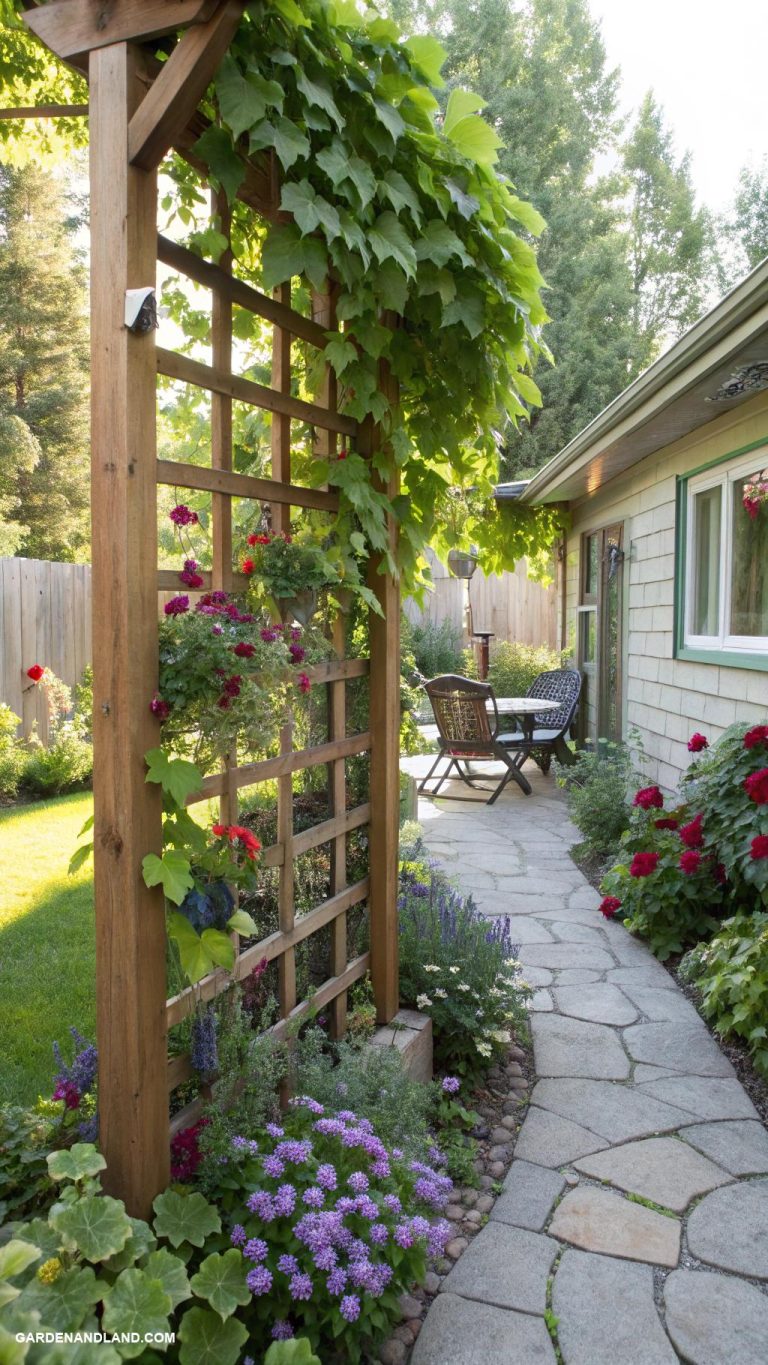10 Stunning Side of House Landscaping Ideas
We may earn a commission through all links on this website. As an Amazon Associate, we earn from qualifying purchases.
As you gaze out at your home’s exterior, you may find yourself drawn to the often-overlooked side yard, a blank canvas just begging for some creative flair. While the front yard may get all the attention, the side yard offers a unique opportunity to add some personality and functionality to your home’s exterior.
Whether you’re looking to create a tranquil retreat, a play area for the kids, or simply a beautiful backdrop for your outdoor living spaces, side yard landscaping ideas can help you turn this often-neglected space into a stunning extension of your home’s curb appeal.
Vertical Garden with Hanging Planters.
Vertical gardens with hanging planters are an innovative way to bring life to the side of your house, maximizing space while adding vibrant greenery. These gardens utilize wall-mounted structures to support a variety of plants, allowing you to create a visually striking display. By incorporating different flowers, herbs, and foliage, you can customize your vertical garden to enhance your home’s aesthetic. Not only do they provide a stunning backdrop, but they also promote eco-friendly living by improving air quality and supporting biodiversity.
Pathway Lined with Colored Stones.
A pathway lined with colored stones can transform the side of your house into a vibrant and inviting space. These artistic stones not only provide a functional route for walking but also add a beautiful visual element that enhances the overall design of your garden. Consider using a variety of colors and sizes to create a unique pattern that complements your landscaping. Surrounding the path with plants or flowers will further enrich the experience, making every stroll a feast for the senses.
Butterfly Garden with Native Plants.
A butterfly garden with native plants can transform a side yard into a vibrant ecosystem that attracts a variety of pollinators. By selecting local flora, you provide essential food sources and habitats for butterflies throughout their life cycles. These plants require less maintenance and water, making them an eco-friendly choice for sustainable landscaping. Incorporating colorful blooms and diverse textures not only enhances the visual appeal of your space but also supports biodiversity in your community.
Mini Zen Garden with Sand and Gravel.
A Mini Zen garden with sand and gravel is an ideal addition to your side yard landscaping, offering a serene space for reflection and tranquility. This compact garden creates a peaceful atmosphere, allowing you to rake patterns into the sand and arrange stones as a form of meditation. The contrasting textures of fine sand and rough gravel enhance the garden’s visual appeal while providing a low-maintenance design element. Incorporating such a garden can elevate your outdoor space, making it a perfect retreat for relaxation and mindfulness.
Perennial Flower Border for Year-Round Blooms.
A perennial flower border can transform the side of your house into a vibrant display of color and texture throughout the year. By selecting a variety of perennials that bloom at different times, you can ensure continuous interest from spring to fall. Incorporating plants like daylilies, coneflowers, and asters will provide a dynamic tapestry of hues, while evergreens can offer structure during the winter months. This thoughtful landscaping approach not only enhances curb appeal but also attracts pollinators and creates a serene outdoor space to enjoy.
Decorative Trellis with Climbing Vines.
A decorative trellis adorned with climbing vines can transform the side of your house into a captivating focal point in your landscape. The interplay of structured wood or metal with the organic beauty of lush greenery creates a stunning visual contrast. As the vines weave and grow, they not only add charm and elegance but also provide a sense of privacy and shade. Incorporating this feature is an excellent way to enhance your garden’s aesthetic while inviting wildlife and improving the overall ecosystem.
Herb Spiral for Culinary Plants.
A herb spiral is a creative and efficient design for cultivating culinary plants in a compact space, making it an ideal feature for side yard landscaping. This vertical garden structure maximizes sunlight and moisture retention while providing diverse growing conditions for various herbs, from sun-loving varieties at the top to moisture-loving ones at the base. Utilizing spiral form creates an eye-catching focal point, blending functionality with aesthetics in your garden design. Additionally, it’s a sustainable gardening method that encourages biodiversity and can significantly enhance your culinary options right at your doorstep.
Rain Garden to Manage Stormwater Efficiently.
A rain garden is a beautifully designed landscaping feature that captures and manages stormwater runoff from roofs, driveways, and other impervious surfaces. By incorporating native plants and specialized soil, these gardens naturally absorb rainwater, allowing it to infiltrate the ground rather than overwhelming drainage systems. Rain gardens not only reduce flooding and erosion but also provide a vibrant habitat for wildlife and add visual interest to your home’s landscape. Installing a rain garden is a practical and sustainable way to enhance your outdoor space while promoting environmental stewardship.
Outdoor Seating Area with Natural Stones.
An outdoor seating area adorned with natural stones creates a harmonious blend with the surrounding landscape, providing a serene retreat right outside your home. The textured surfaces of the stones not only offer a rustic charm but also improve drainage and reduce mud accumulation, making the space functional year-round. Complemented by lush greenery and vibrant flowers, this seating area becomes an inviting spot for relaxation or social gatherings. With the gentle warmth of natural materials, it encourages outdoor living while enhancing the beauty of your garden space.
Edible Landscaping with Fruit Trees.
Edible landscaping with fruit trees is an innovative way to enhance the aesthetics of your garden while providing delicious, fresh produce right at your doorstep. Incorporating fruit trees along the side of your house can create a visually appealing and productive landscape, blending beauty with functionality. Select varieties that thrive in your climate and complement existing plants to ensure a harmonious design. With thoughtful placement and maintenance, these trees can offer shade, attract pollinators, and yield fresh fruits for years to come.


